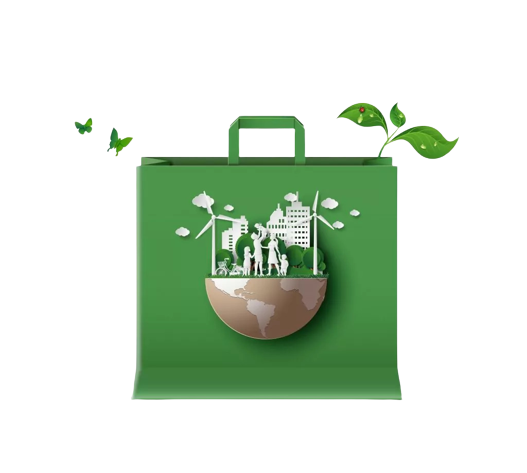Introduction
Now more than ever, making a green choice matters. When you’re hosting a party, you’re taking lunch, or you’re just grabbing a quick nosh on the run, you’ve probably been using disposable plates. But have you ever stopped to think about whether bagasse plates or paper plates are the greener choice?
Both are popular favorites, yet they’re made in different ways and have incredibly different impacts on the world. In this article, we’ll deconstruct the primary differences, explain how they’re made, and help you figure out which one is ideal for your way of life. If you’re looking to reduce waste and live a greener lifestyle, you’re going to want to try reading on.
What are Bagasse Plates?
Bagasse plates are made of sugarcane pulp — what’s left after sugarcane juice is squeezed out. Instead of throwing that away, it’s transformed into something amazingly useful: strong, biodegradable bagasse plates ideal for the earth.
These plates are gaining popularity because they’re not just green — they’re tough, utilitarian, and cool. And they cut waste by recycling what would otherwise end up in the trash.
Principal features of eco-friendly bagasse plates:
- Made of sustainable, natural sugarcane pulp
- 100% compostable and biodegradable
- Far more durable than standard paper plates
- Can hold hot and cold foods
- Often microwave- and freezer-safe
They’re also a great addition to other green products like a compostable shopping tote or compostable totes when you’re cooking food for parties or take-out.
What are Paper Plates?
Paper plates might appear green at first sight, but the majority are made of virgin wood pulp — i.e., trees are usually being cut down to make them. Others are made from recycled materials, but far too many of them are plastic- or wax-coated, so they are not so nice to recycle or compost.
They’re cheap and easy to use, but they’re not terribly durable with hot, greasy, or heavy foods — and they’re not doing the Earth a whole lot of good, either.
General features of paper plates:
- Made of pulp wood (not necessarily recycled)
- Usually waxed or plastic coated
- Not always easily recyclable or compostable
- Flimsy when serving hot or moist foods
- Affordable but not sustainable
They also don’t fit as easily into green lives as alternatives like biodegradable bubble wrap or a compostable trash bag when disposed of properly.
Benefits of Biogreen Bag’s Bagasse Plates
Biogreen Bag’s green bagasse plates go one step further by utilizing superior sugarcane pulp to create superior, durable, and stylish plates. They are perfect for home use, restaurants, parties, and events — wherever you wish to eliminate plastic and paper waste.
Not only are they durable — they’re environmentally friendly, as well, since they’re made from pieces of farm material rather than cutting down trees.
Why Biogreen Bag’s bagasse biodegradable plates are so well-liked:
- Made of 100% plant-based material — not a single plastic piece
- Home composting or composting in large-scale composting factories
- Extra strong, leak-proof, and won’t sag with hot foods
- Safe for microwaves and freezers
- Sophisticated enough for going out and casual enough for street style
And as you’re going green, check out their compostable courier bag or compostable carry bag solutions for an entire green system.
Bagasse Plate vs Paper Plate: Which is Greener?
If we’re being completely eco-friendly, bagasse plates are the no-brainer choice. They recycle waste, compost rapidly, and don’t aid deforestation. Paper plates look greener, but unless they’re uncoated and recycled, they might be more hassle than they’re worth.
Here is a quick side-by-side comparison:
| Feature | Bagasse Plates | Paper Plates |
| Eco-Friendliness | Recycle waste, compost rapidly, no deforestation | Can look green but may not be unless uncoated/recycled |
| Decomposition | Compost in 60–90 days | Varies; often longer if coated |
| Chemical Use | No artificial colorants or harmful chemicals | May contain coatings or dyes |
| Food Compatibility | Airtight for hot, cold, oily, and acidic foods | Depends on type and coating |
| Use Cases | Restaurants, domestic use, parties | Often for casual use, sometimes single-use only |
To be completely eco-friendly, match them with functional accessories such as a biodegradable stretch wrap or compostable trash bag for easy disposal of your trash.
Conclusion
So, bagasse plates or paper plates — who’s the green hero? No doubt about it, biodegradable bagasse plates are the smart, green choice. Made from waste products, they don’t contribute to deforestation, and compost three to four times faster than paper.
If you want something sturdy, environment-friendly, and fashionable, bagasse plates are the best. And they look good and perform better as well.
To take it one step further, research additional eco-friendly options such as a biodegradable dog poop bag, or biodegradable cling wrap — all help!
FAQ
1. Is a bagasse plate more environmentally friendly than a paper plate?
Absolutely. Bagasse plates are made from waste sugarcane, while the majority of paper plates entail cutting down trees. Second, bagasse disintegrates quickly and does not need a plastic coating to be durable.
2. Are bagasse plates compostable at home?
Aye! Cut into small pieces, bagasse plates can fully compost in your home compost bin in 60–90 days. They’re sanitary, hygienic, and add organic matter to your compost pile.
3. Are paper plates recyclable or compostable?
Only if they’re uncoated. Most paper plates have a wax or plastic coating on them, and these cannot be recycled and are also difficult to compost.
4. Are bagasse plates microwave and freezer-safe?
Indeed, they are! Bagasse plates can be microwaved and freezer-safe and won’t become soggy or fall apart.
5. What do bagasse plates cost more?
They are made from natural, renewable resources and employ green manufacturing processes. You’re paying for quality, safety, and lesser impact. For other green alternatives, use biodegradable stretch wrap and biodegradable dog poop bags for everyday use.


